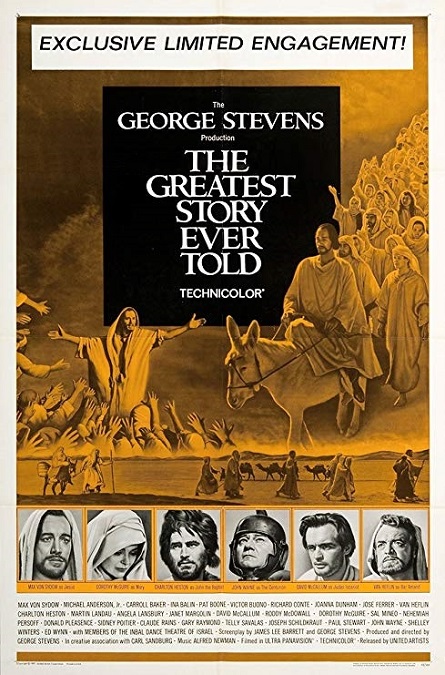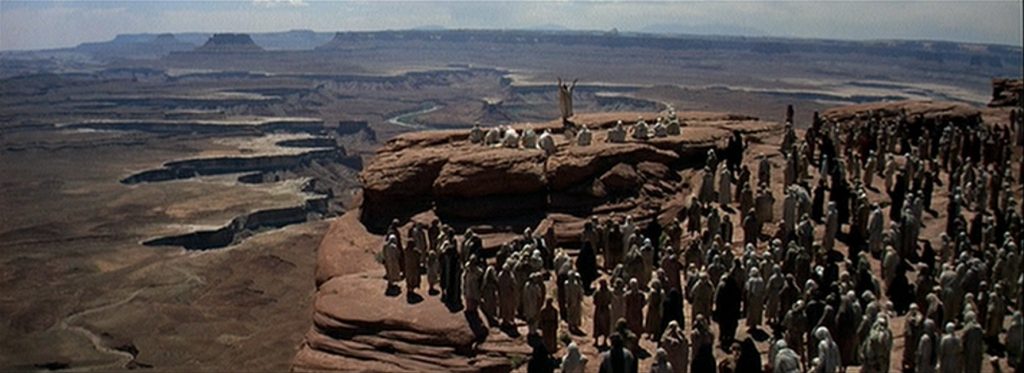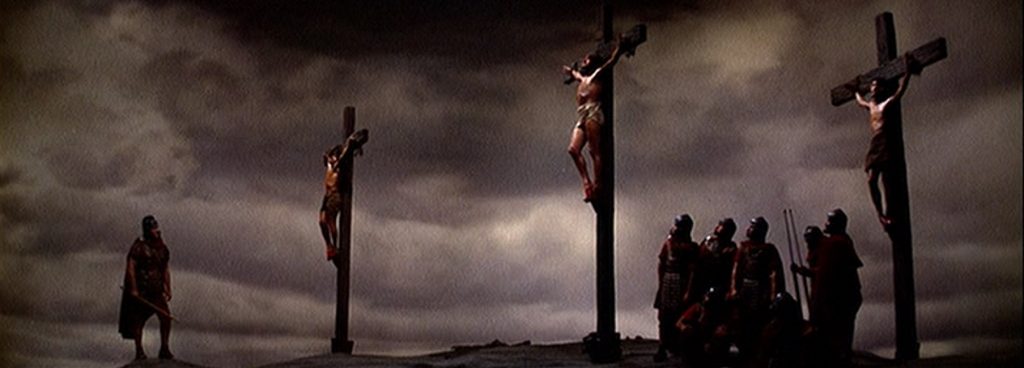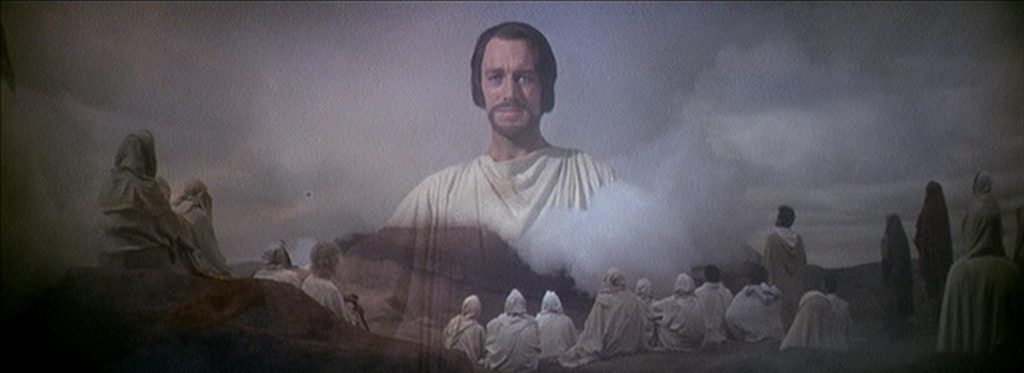



The Greatest Story Ever Told – 1965

Ok, so why am I giving this big epic film a two-star rating for its special effects? Because it was a big-budget movie that could have been spectacular, but was just dull and visually uninteresting. The bible stories which tell of the life of Jesus of Nazareth are packed full of things that should have inspired some pretty phenomenal special effects, and none of them were taken advantage of.
You see, the miracles of Jesus were many and varied. There was so much they could have attempted to show. But they habitually told us about them rather than showing them to us. For example, we could have been shown Jesus walking on the water, or calming a storm, or being transfigured. But these miracles, which could have been cinematically interesting, were only mentioned in passing.
And even the miracles they did show could have been more visually interesting, like Jesus’ baptism. According to the New King James Bible, Mark 1:10-11, “And immediately coming up from the water, He saw the heavens parting and the Spirit descending upon Him like a dove. Then a voice came from heaven, ‘You are My beloved Son, in whom I am well pleased.’” To me, it sounds like an opportunity for some great effects. A little glory perhaps, or maybe a floating light, or a booming voice? But there was nothing. He was dunked under the water and came back up without any visual indication that it was a significant event.
And then came the climax of the film, the crucifixion. According to Matthew 27:51-52, “And behold, the veil in the temple was torn in two from top to bottom, and the earth quaked, and the rocks were split, and the graves were opened; and many bodies of the saints who had fallen asleep were raised.” But again, there was nothing. All we got was a random yet highly publicized cameo of John Wayne, playing a Roman Centurion, saying, “Truly this man was the Son of God.”
So what miracles did the movie show? We saw Jesus make a crippled man walk, he restored sight to a blind man, and he raised Lazarus from the dead. But none of these things required any special effects at all. Then what effects earned the movie its Best Visual Effects nomination? Well, there were some fantastic matte paintings of skies and landscapes, and the little epilogue scene of Christ’s ascension had some cloud-like smoke, and an overlay of a close-up of Jesus, combined with images of his followers sitting and looking up to the sky. But even then, we are never shown anything interesting, like Jesus floating up off the ground.
So why were all the special effects opportunities missed? As near as I can guess, the film was based not so much on the Bible itself, as on the original book with which it shares its name, written by Fulton Oursler. The book tells the Nazarene’s story faithfully, but focus more on the historical, cultural, and societal anthropology of the times in which Jesus lived, rather than on the mysticism of Jesus and his miracles. Unfortunately, that made it a visually dull film when it didn’t have to be.